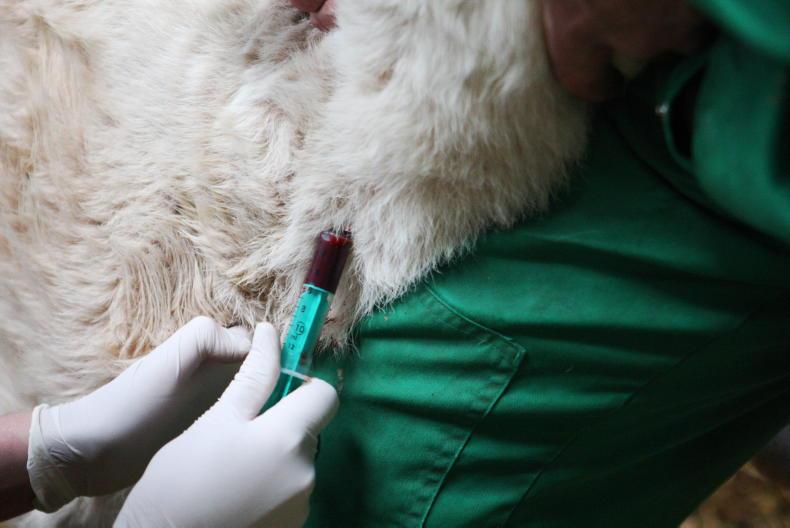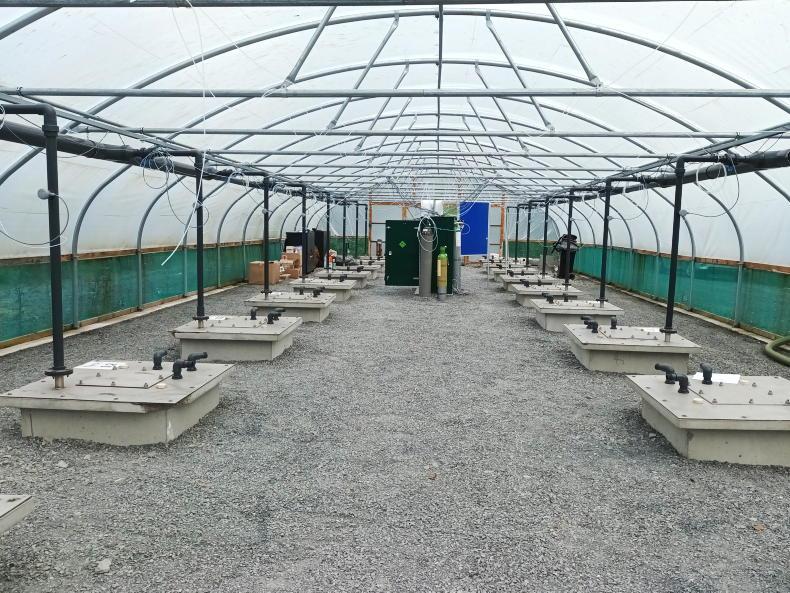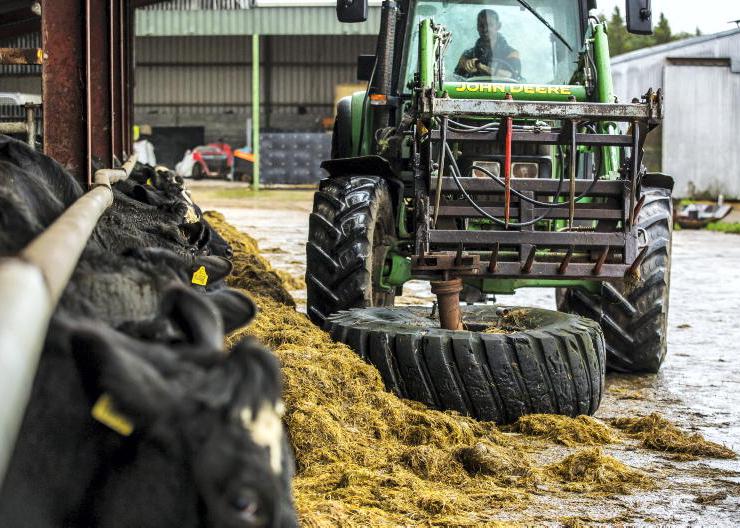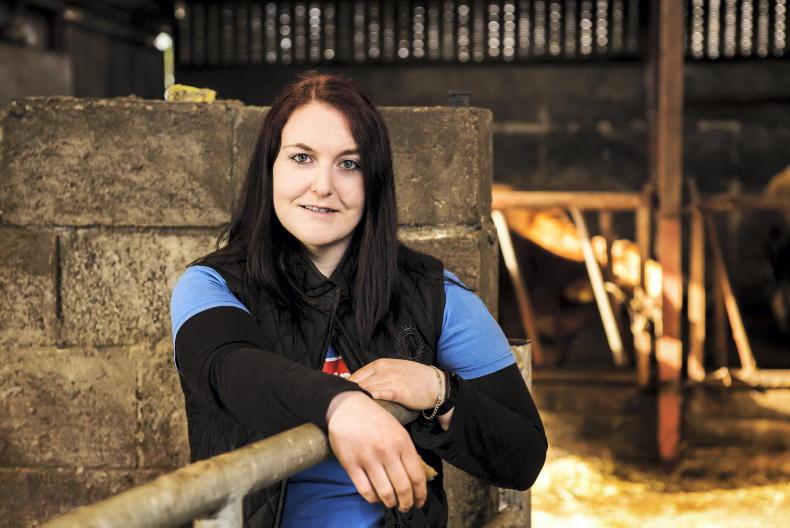Switching from three-cut to four-cut grass silage can significantly increase milk output, but more land area is required, and there are other practical challenges to overcome, a study undertaken at AFBI Hillsbourough has shown.
Reported in the journal Animals with Dr Aimee Craig as the lead author, the work involved 80 Holstein dairy cows allocated at calving to silage originating from either a three – or four-cut system.
Grass was harvested from a total area of 16.8ha, with the four largest fields split in two, and managed accordingly, while of the two smallest fields, one was cut three times and the other cut four times.
Both systems received a similar amount of organic and inorganic nitrogen (N) at 300kg and 310kg N/ha, with an inoculant (Biotal) used at harvest. The target was to ensile the grass at 30% dry matter (DM), however, unexpected machinery-related delays and wet weather meant the actual range was from 23% to 51%.
Cows on the experiment were individually fed the silages over a 25-week winter period, by order of harvest date, starting with the first-cut silage. In the basal diet, silage was mixed with concentrate to achieve a target concentrate intake of 8kg/cow and beyond that, cows were fed to yield (0.45kg/l) using both in-parlour and out-of-parlour feeders.
Grass yield
The three-cut system produced higher total yields of grass DM at harvest (13.4t versus 12.3t DM/ha), but ME and crude protein content of the resultant silage was higher where four cuts were taken. Across the three cuts, ME averaged 10.7MJ/kg DM compared to 11.3MJ/kg DM in the four-cut system.
The cows offered silage made across four cuts also had significantly higher silage DM intakes (up by 0.9kg DM/day) while consuming 0.3kg less concentrate DM per head per day.
Overall, because cows in the four-cut system consumed more of a higher energy feed, their daily ME intake was up 8MJ/cow, and this translated into higher output. Milk yield was up by 2.4l/day, with the cows on this treatment also having significantly higher fat and protein yields.
In practice
This improved cow performance must be set against the lower grass yields when four cuts are taken. Results from the current study are consistent with previous AFBI research which has shown that more frequent harvesting has a negative impact on overall grass yield. To feed a 100-cow dairy herd for a 180-day winter period, the AFBI scientists point out that 19.3% more land will be required when compared to a three-cut system.
However, the four-cut system allows concentrate usage to be cut 2.2%, while still delivering a 6.9% increase in milk fat and protein yield, which at recent prices would deliver a substantial income boost.
“The relative economic performance of these different approaches for a farmer will depend on a range of factors, including land value, silage production costs and concentrate costs, and the milk price received,” note the AFBI study authors.
They also point out that a four-cut system comes with other challenges. In particular, there is often a short time-window to get silage harvested in NI, and given the risk of higher nitrate levels in herbage (due to the shorter period between cuts), it is necessary to wilt the crop to ensure a stable fermentation. In the study, it was not possible to get grass to 30% DM utilising a 24-hour wilt when final harvests were taken in September.
Read more
Western farmers take delivery of northern fertiliser
Greenmount playing it safe with clover
Switching from three-cut to four-cut grass silage can significantly increase milk output, but more land area is required, and there are other practical challenges to overcome, a study undertaken at AFBI Hillsbourough has shown.
Reported in the journal Animals with Dr Aimee Craig as the lead author, the work involved 80 Holstein dairy cows allocated at calving to silage originating from either a three – or four-cut system.
Grass was harvested from a total area of 16.8ha, with the four largest fields split in two, and managed accordingly, while of the two smallest fields, one was cut three times and the other cut four times.
Both systems received a similar amount of organic and inorganic nitrogen (N) at 300kg and 310kg N/ha, with an inoculant (Biotal) used at harvest. The target was to ensile the grass at 30% dry matter (DM), however, unexpected machinery-related delays and wet weather meant the actual range was from 23% to 51%.
Cows on the experiment were individually fed the silages over a 25-week winter period, by order of harvest date, starting with the first-cut silage. In the basal diet, silage was mixed with concentrate to achieve a target concentrate intake of 8kg/cow and beyond that, cows were fed to yield (0.45kg/l) using both in-parlour and out-of-parlour feeders.
Grass yield
The three-cut system produced higher total yields of grass DM at harvest (13.4t versus 12.3t DM/ha), but ME and crude protein content of the resultant silage was higher where four cuts were taken. Across the three cuts, ME averaged 10.7MJ/kg DM compared to 11.3MJ/kg DM in the four-cut system.
The cows offered silage made across four cuts also had significantly higher silage DM intakes (up by 0.9kg DM/day) while consuming 0.3kg less concentrate DM per head per day.
Overall, because cows in the four-cut system consumed more of a higher energy feed, their daily ME intake was up 8MJ/cow, and this translated into higher output. Milk yield was up by 2.4l/day, with the cows on this treatment also having significantly higher fat and protein yields.
In practice
This improved cow performance must be set against the lower grass yields when four cuts are taken. Results from the current study are consistent with previous AFBI research which has shown that more frequent harvesting has a negative impact on overall grass yield. To feed a 100-cow dairy herd for a 180-day winter period, the AFBI scientists point out that 19.3% more land will be required when compared to a three-cut system.
However, the four-cut system allows concentrate usage to be cut 2.2%, while still delivering a 6.9% increase in milk fat and protein yield, which at recent prices would deliver a substantial income boost.
“The relative economic performance of these different approaches for a farmer will depend on a range of factors, including land value, silage production costs and concentrate costs, and the milk price received,” note the AFBI study authors.
They also point out that a four-cut system comes with other challenges. In particular, there is often a short time-window to get silage harvested in NI, and given the risk of higher nitrate levels in herbage (due to the shorter period between cuts), it is necessary to wilt the crop to ensure a stable fermentation. In the study, it was not possible to get grass to 30% DM utilising a 24-hour wilt when final harvests were taken in September.
Read more
Western farmers take delivery of northern fertiliser
Greenmount playing it safe with clover









SHARING OPTIONS